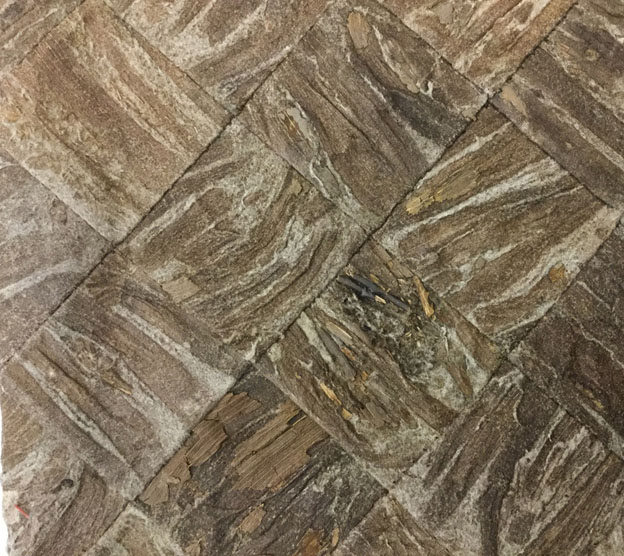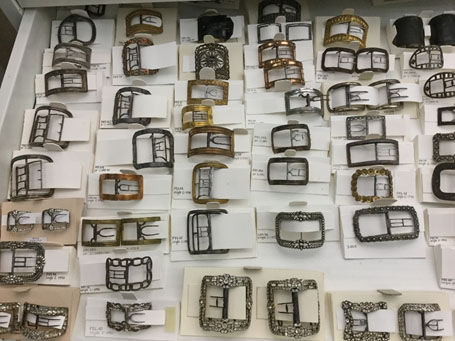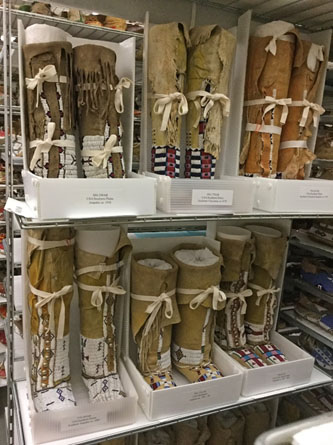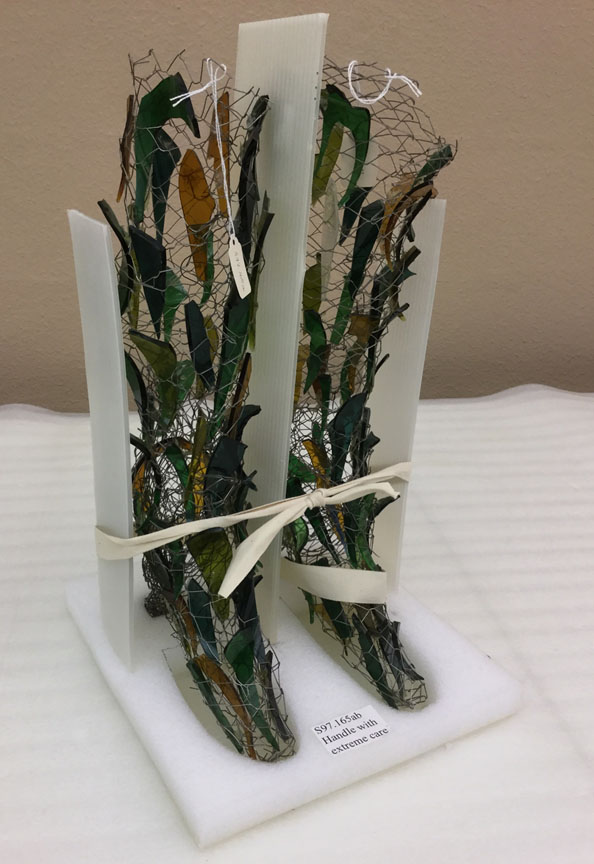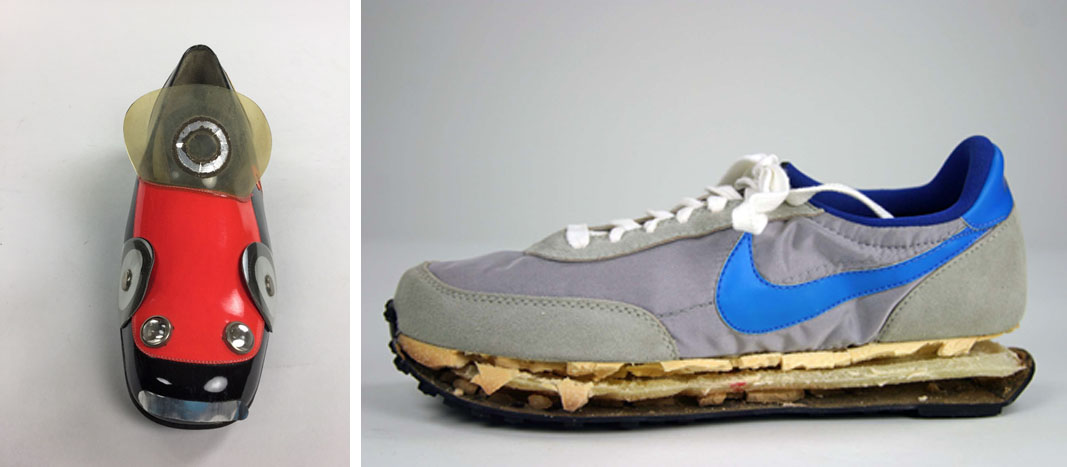Last month, our curatorial team participated in the global event, #AskaCurator. In case you missed it, here’s our conservator, Ada, answering some of your questions.
What does your typical day look like?
The first thing I do and the last thing is to check the environment (temperature and humidity) in each gallery and storage room. This allows me to see if there are any dramatic fluctuations, and if there are, try to trouble shoot that issue with the building manager. Usually there are several conservation projects on the go at one time. Right now I’m assessing the condition of all the rubber based artefacts in the collection and making a mannequin for a skating outfit that will be photographed for an upcoming online project.
What’s the weirdest object in your collection?
It’s not so much the weirdest object, but the most unusual material. In 2012, a pair of shoes with matching purse made of cocoon casings was donated to the museum. Some caterpillars spin their cocoons from surrounding materials – in this case leaves, bark and twigs found on the ground. The casings were collected, washed, cut into squares and sewn together creating robust ‘paper’ sheets from which these items were made. If you look closely you can see the incorporated twigs and bark.
How have you done your job during the pandemic?
Initially, starting in mid March, I was working from my home office on small projects for the newest exhibition The Great Divide. It was also a great time to review and update conservation policies, as well as do research for a future storage project. At the end of May, I came in to the museum one day a week, and by the end of June was back to working on site every day.
What’s the difference between a curator and a conservator?
Both curator and conservator need to know the history of an artefact: where it was made, when it was made and the technique/materials involved. A conservator intervenes if an object needs stabilization. For this process, there needs to be an understanding of the materials that compose the artefact and how they will interact with the conservation treatment. The underlying rule of conservation is that all treatments must be reversible.
Do you have any advice for someone who wants to become a conservator?
Many conservators get a BA in art history, archaeology, chemistry or anthropology. To continue on to post graduate studies, an aspiring conservator must have some chemistry in their repertoire. Try and volunteer with a conservator either at a public institution or at a private conservation lab to determine if this really is the profession for you.
Do you have any wisdom for aspiring conservators?
If possible be flexible in gaining work experience. There are some amazing opportunities to travel on short term contracts. You will come out with a well rounded resumé and an understanding of how conservation fits in to museums of different sizes and collection focus.
Where do you keep all the things not on display?
All artefacts not on display are housed within the museum in environmentally controlled storage rooms. All of the footwear is stored on shelving units, geographically in chronological order. Special containers are made for boots, shoes and accessories that are not self-supporting.
Shoe buckles are stored on trays that prevent them from becoming entangled when the storage cabinet drawer is opened.
These boots are top heavy so they have internal supports plus a container to keep them upright on the storage shelves.
What’s the most dangerous object in your collection?
In my mind, the most dangerous object is the one that would be the most challenging to handle! This glass sculpture, made by Polish artist Marta Klonowska, is a pair of boots made out of chicken wire with shards of glass hot melt glued in place. You would really have to figure out how to maneuver them and they would require a special mount for display. As you can see they have a storage mount with which to pick them up, plus a barrier between, to prevent the pieces of glass from becoming entangled.
What’s the most difficult artefacts to preserve?
Easy: plastics!! Some have their own built-in inherent vice that causes them to self destruct over time. Sneakers are a great example as their polyurethane midsoles can disintegrate, however it’s not the only one. Plasticized polyvinyl chloride can discolour and become sticky like the wind screen of these ‘car’ shoes, which were once clear but have yellowed over time.
Stay tuned next week to hear from our Exhibitions Manager and Assistant Curator, Nishi!



